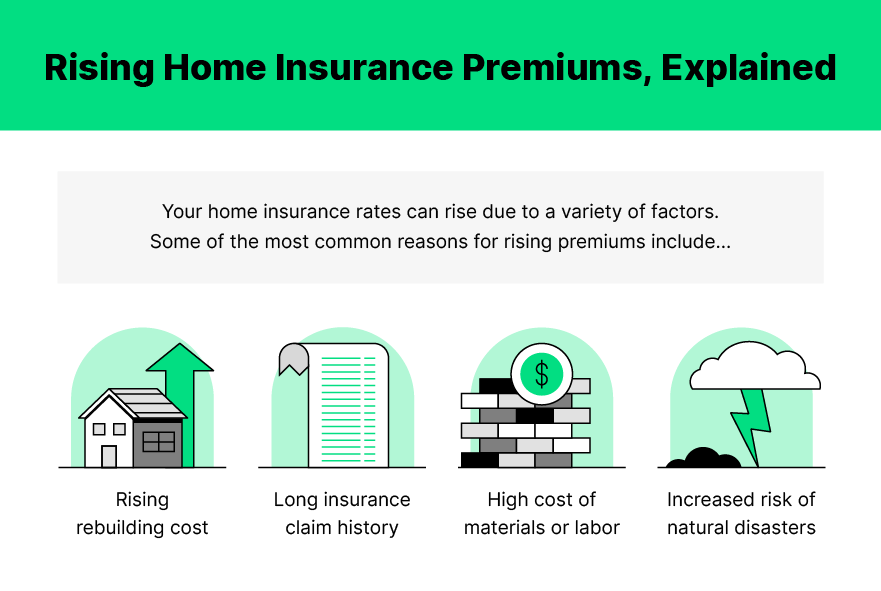Homeowners looking to save money on insurance payments can profit from introducing storm assurance highlights. Insurance agencies frequently offer limits to policyholders who find proactive ways to decrease the risk of tempest harm. By upgrading your home’s versatility against storms, you safeguard your property and exhibit to safety net providers that you are limiting likely cases.
Storm assurance highlights can include introducing impact-resistant windows, supporting the rooftop with more grounded materials, adding storm screens, and constructing entryways. These redesigns make your home less vulnerable to wind, hail, and flooding, which are common causes of critical harm during storms. Some guarantors may likewise limit homes equipped with sump siphons, water redirection frameworks, or flood boundaries to diminish the risk of water damage.

While the upfront expense of these upgrades can change, the delayed reserve funds on insurance installments can make them a beneficial venture. Also, a few locales offer government incentives or refunds for storm-safe home updates. By investing in storm protection, property holders can appreciate both upgraded security and decreased protection costs.
Determining Coverage Needs for Short-Term Rentals
When determining coverage needs for short-term rentals, the key is to understand both the risks you face and the protections you want. Typically, short-term rental renters will face unique risks, such as:
- Property Damage: Unlike long-term leases, short-term rentals often involve frequent tenant turnover, making property damage a real concern. Consider coverage for accidental damage, vandalism, or issues that arise during the stay.
- Liability Coverage: If a guest is injured while staying at your rental, liability insurance will protect you from potential legal claims. It’s vital for short-term rentals because guests are not as familiar with the property as they would be with a long-term rental.
- Theft and Vandalism: Short-term renters may not be as attached to your property as long-term renters, which can increase the risk of theft or vandalism. Coverage for personal property, including furniture, electronics, and any valuable items within the space, can be critical here.
- Loss of Use: If the rental becomes uninhabitable due to damage or disaster (e.g., a fire), loss of use coverage can help compensate for lost income, which is particularly important if you rely on the rental income.
To determine the amount of coverage needed, assess the value of your personal property, the potential risks, and whether you’re renting in an area with a high likelihood of incidents like theft or natural disasters.
Choosing the Right Policy Type for Short-Term Rentals
There are generally three types of renters insurance policies: Actual Cash Value (ACV), Replacement Cost, and Extended Replacement Cost.

- Actual Cash Value: This policy covers your property’s current market value, accounting for depreciation. While cheaper, it might not fully replace the value of damaged or stolen items, especially if they are older.
- Replacement Cost: This policy reimburses you for the cost of replacing your damaged property without factoring in depreciation. It offers more comprehensive protection for your belongings.
- Extended Replacement Cost: This is similar to replacement cost, but it adds an extra layer of coverage in case replacement prices rise dramatically after a claim. This is ideal in case of substantial property damage or a major event in your area.
For short-term rentals, Replacement Cost is typically the most beneficial option, as it ensures that you can fully replace anything damaged during a guest’s stay.
Selecting a Deductible for Short-Term Rentals
The deductible is the amount you’ll pay out-of-pocket before your insurance coverage kicks in. Short-term rental policies can have varying deductible amounts, and it’s essential to select one that aligns with your financial situation.
- Lower Deductible: If you opt for a low deductible, your premiums (monthly or yearly payments) will likely be higher. This can be a good option if you anticipate the need to file claims frequently or if you want to ensure that out-of-pocket costs remain manageable.
- Higher Deductible: If you are comfortable with paying a higher out-of-pocket expense in the event of a claim, a higher deductible can reduce your premiums. However, if you’re renting out high-value property, a higher deductible might put you at risk of substantial out-of-pocket costs if a claim arises.
Comparing Insurance Providers for Short-Term Rentals
Not all insurance providers are the same, especially when it comes to short-term rental coverage. Here’s how to compare options:
- Coverage Options: Make sure the policy covers property damage, liability, and any specific needs like accidental damage caused by guests.
- Claims Process: Look for insurers with a strong reputation for quick and fair claims processing.
- Customization: Some providers allow you to add endorsements or riders to tailor the policy to your specific needs.
- Pricing: Get quotes from several companies and compare the cost for similar coverage. However, prioritize coverage and service over just the lowest price.
- Customer Support: Customer service is crucial, especially if you need help navigating a claim. Read reviews and assess the insurer’s availability and responsiveness.
Top Insurance Providers for Short-Term Rentals

Some of the best-known insurance providers for short-term rental coverage include:
- Lemonade: Known for its user-friendly app, Lemonade offers competitive renters insurance policies and can cover short-term rentals.
- Allstate: Allstate’s landlord insurance can often be extended to include short-term rental coverage. It also provides various add-ons for liability and personal property protection.
- State Farm: State Farm offers tailored short-term rental policies, with coverage options for liability and property damage.
- Hippo: Hippo is known for providing flexible, customizable policies that work well for short-term rental owners, including replacement cost coverage and enhanced coverage options.
- USAA: For military families, USAA offers excellent renters insurance policies, including ones that can be tailored for short-term rental situations.
Reading Policy Documents Carefully for Short-Term Rentals
Always read through the fine print of your policy. Insurance policies can be complex, and you want to ensure that you’re covered for specific situations. Pay attention to:
- Exclusions: What’s not covered? Some policies may exclude certain types of damage (like flooding or earthquakes), so you may need to purchase additional coverage.
- Limits on Claims: Check the policy’s limits for both personal property and liability coverage to ensure they’re adequate for your needs.
- Special Terms for Short-Term Rentals: Many standard renters insurance policies won’t cover short-term rentals by default. Be sure that your insurer has tailored their policy to cover the specific needs of short-term rental properties.
Tips for Buying Renters Insurance for Short-Term Rentals
- Shop Around: Don’t settle for the first quote you receive. Compare multiple insurance providers to find the best deal with the most comprehensive coverage.
- Ask About Short-Term Rental Endorsements: Not all standard renters insurance policies will cover short-term rentals. Be sure to ask about endorsements or separate policies designed for short-term rental hosts.
- Consider Guest-Centric Coverage: Some insurers offer guest-specific coverage for damages caused by guests during their stay. This can help avoid issues with personal liability in the event of accidents or damage.
- Document Your Property: Before renting out your space, take photos and create a detailed inventory of your property. This will help you in the event of a claim.
- Understand Local Regulations: Some cities or regions may require short-term rental hosts to have specific types of insurance, so make sure you comply with any local laws.
Common Mistakes to Avoid When Buying Renters Insurance for Short-Term Rentals

- Underinsuring Your Property: It can be tempting to go for the lowest premium, but this may lead to inadequate coverage. Make sure your policy adequately covers the replacement cost of your belongings.
- Ignoring Liability Coverage: Some hosts overlook the importance of liability coverage, which can be disastrous if a guest gets injured on your property.
- Overlooking Exclusions: Always double-check what’s not covered. Many policies exclude damage caused by certain natural disasters, so it might be necessary to purchase supplemental coverage.
- Assuming Homeowners Insurance Covers Rentals: Homeowners insurance policies often don’t cover short-term rentals. Always check that your renter’s or landlord’s policy explicitly covers this use case.
Finalizing the Purchase and Reviewing Policy Details
Prior to finishing your buy, set aside some margin to survey the arrangement exhaustively. Affirm that all the fundamental inclusion is incorporated, the deductible is reasonable, and the expenses are acceptable for you. Whenever you’ve joined, keep a duplicate of your strategy in a protected spot and note the case cycle in the event that something turns out badly during your rental periods.
Likewise, try to consistently survey your approach, particularly if you are moving to your property, changing your rental recurrence, or migrating.
Frequently Asked Questions
How might storm assurance highlight lower property holders’ insurance installments?
Introducing storm security highlights decreases the gamble of harm, which safety net providers prize with lower charges.
What kinds of tempest assurance highlights are best?
Influence-safe windows, built-up rooftops, storm screens, and secure entryways are among the best elements.
Does storm assurance highlights forestall a wide range of harm?
While they lessen the gamble of wind, hail, and flooding harm, they can’t dispose of all tempest-related chances.
Will introducing storm shades bring down my expenses?
Indeed, storm shades can decrease the risk of harm from high winds, frequently resulting in premium limits.
What amount might I, at any point, save money on charges with storm security?
Reserve funds change, yet property holders can expect up to a 10-20% decrease in charges, contingent upon the highlights and safety net provider.
Are there any administration impetuses for introducing storm assurance?
In certain areas, taxpayer-supported initiatives offer refunds or duty motivations for storm-safe home upgrades.
Does each insurance agency offer limits for storm assurance?
Most backup plans offer limits; however, the sum and qualification models can differ between organizations.
What other tempest security highlights could safety net providers reward?
Flood boundaries, sump siphons, and water redirection frameworks can likewise prompt lower expenses.
Do I have to advise my guarantor subsequent to introducing storm security?
Indeed, consistently illuminate your guarantor about any redesigns, as they might change your charges as needed.
Is the expense of introducing storm security worth the reserve funds?
While upfront expenses can be high, long-term reserve funds on insurance installments frequently make storm security a beneficial venture.
Conclusion
Putting resources into storm insurance not only upgrades the well-being and solidness of your home but also offers outrageous monetary advantages. By lessening the gamble of tempest harm, for example, from high breezes, hail, or flooding, mortgage holders can fit the bill for limits on their insurance payments. Highlights like effective, safe windows, supported rooftops, storm screens, and flood hindrances can make your home more substantial, which guarantors perceive and compensate for. While the underlying expense of these enhancements might appear to be high, the drawn-out reserve funds on insurance installments can make them a beneficial speculation.




